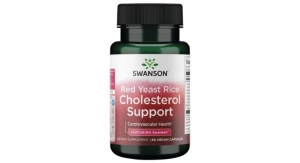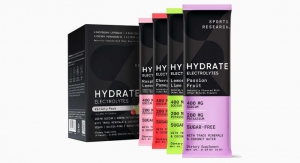05.01.06
Case Study: Amerifit Nutrition
Business Description: Amerifit Nutrition, Bloomfield, CT, is owned by Charterhouse Group, a private equity house. The company markets a leading menopause supplement brand, Estroven.
Theme: Amerifit uses a classic consumer packaged goods (CPG) marketing and branding philosophy to build brands, and it’s looking for ways to expand the company’s franchise
Background: Estroven is the leading brand in the Amerifit portfolio, which also includes Vitaball, Flex Able and Sootherbs. With regard to products targeting menopause, Amerifit is the clear market leader with over a 40% share, more than double the closest competitor. The company competes with approximately four other significant players in the market for menopausal symptoms, and has annual U.S. retail sales of about $180 million. Much of the brand’s success is owed to the skill set of the management team, which possesses a wealth of experience in CPG and understands the need to get a brand’s message out through a well-designed promotion plan. Once new venture capitalists were brought on board in 1999, and the Amerifit team had adequate access to capital and resources to implement its plans, the company quickly took over the market leadership position. The market opportunity for menopause and its symptoms is huge, with 65% of the U.S. female adult population—about 60 million women ages 35-64—now in or entering the menopause phase of their life. When perimenopausal women are included in this group, the market is even larger. Many women in this category are turning to natural alternatives to alleviate symptoms such as hot flashes, mood swings, and other discomforts associated with perimenopause and menopause.
Situation Assessment: The real profit driver within Amerifit is its Estroven brand. Much of its strategy revolves around stretching the brand to areas where it can compete and win. Amerifit has proven it ability to compete and win against much larger players with more resources simply because it spends advertising dollars wisely and makes a connection with the needs of its consumers. The Amerifit team continues to grow the brand through a series of product launches, coupled with discipline to adjust its strategy as it learns more about the market. After launching Estroven in tablet form in 1998, Amerifit looked at new delivery forms such as gelcaps and chewing gums. It also considered other conditions like joint, bone or heart health; they even introduced a medical device. Not all of these products met expectations, but these actions allowed Amerifit to test the market and refine its strategy to stay close to its heritage, which is the menopause symptoms market. In 2005, Amerifit was purchased by Charterhouse, who has publicly stated its desire to continue to build a franchise in women’s health. Indeed, its strategic plan focuses on moving beyond menopause to other areas of women’s health—most likely through acquisitions—where it can play a unique role in the market.
Opportunities: Within the past year, Estroven has picked up considerable market share while the overall market has remained relatively flat. Amerifit’s focus on the market and its ability to test new concepts has helped the company gain a clearer picture of its market and brand power. Going forward, much of its success will depend on choosing its products wisely and knowing how far it can stretch Estroven. As an example, the company recently launched Estroven PM, which is positioned to help address the sleep problems associated with menopause—it’s not a sleep aid for women, but rather it extends the brand to other menopausal symptoms. The overall women’s health franchise can be built at the company level, mostly via acquisition. To that end, Amerifit recently purchased AZO Standard, the leading over-the-counter (OTC) brand targeted for urinary tract infections (UTIs)—it is currently being managed by the Amerifit team.
Lessons Learned: (1) Getting a message out to consumers requires promotion on a constant basis. Estroven has increasingly picked up market share—almost doubling since 2002—largely due to its continued support; competitors pulled back on their promotion. (2) Growing a brand requires testing the market. All brands are owned by the market and the market determines its boundaries. Amerifit has continued to put out new products that it believes fit the needs of its consumers. It also quickly corrected missteps when it was needed. (3) Stretching within a category doesn’t need to be done with one brand. Estroven’s focus continues to return to its heritage, built around menopausal symptoms, but further expansion can be carried out by Amerifit through other brands as well.



























